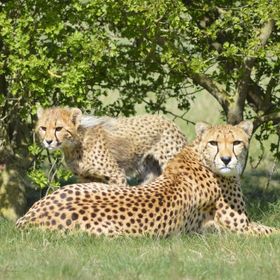Views
416
Likes
Awards
Peer Award
Superb Composition
Outstanding Creativity
Absolute Masterpiece
Top Choice
Magnificent Capture
All Star
Top Ranks
Categories
Same photographer See allBehind The Lens
Discover more photos See all
Behind The Lens
Location
This photograph is one of many butterfly images I have taken. It was captured at The Butterfly Farm in Stratford Upon Avon. These images are very important to me for two reasons. Firstly, I am passionate about the conservation of butterfly species and I raise quite a few native species myself every year. Secondly, I am a fairytale photographer and these same butterfly wings often appear in my images attached to a new body!Time
This was some time in the early afternoon. The roof of the butterfly house is designed to let as much light in as possible and acts like a big diffuser, which is useful as visits during the middle of the day are great - plenty of even light. The place was very warm and humid, and we were warned that my lens might get a bit steamed up, but it seemed fine. I don't think we handled the heat quite so well, and had to take a break for cold drinks after a couple of hours.Lighting
I use a combination of natural lighting and a small reflector to fill in the shadows and enhance colour. This tends to be my most used lighting as it is simple and quick. However, while I am holding the camera firmly, it does require a second pair of hands to reflect the light as my long-suffering husband will confirm!Equipment
This was shot on my Nikon D800 with my Sigma 105mm f2.8 lens. This is my goto macro lens. The shot was handheld as butterflies do not sit for very long! The reflector was a small one (55cm) and the silver side was used to reflect the maximum amount of light. A bigger reflector is no use in a butterfly house as it gets in the way of the lens and the people around you!Inspiration
I have been taking butterfly images for years. Their life cycle is fascinating and their beauty is simply breathtaking. I never tire of watching them. Taking a trip to the Butterfly Farm is an opportunity to observe some of the more exotic species and also to see the effect that these delicate creatures have on people, in particular children. They have the ability to bring out the wonder and joy in those who meet them, and, as a result of this, a butterfly farm becomes a very gentle, peaceful and happy place. There really should be more of them!Editing
I boosted the colour in Lightroom a little using vibrance and I also added a little clarity. I cropped the image to take advantage of the diagonal line created by the butterfly wing. I added a little contrast with curves and, finally, I used a light vignette to create a soft white border.In my camera bag
My camera bag contents change depending on what I am setting out to do. If I am looking to capture images of Mother Nature's beautiful tiny flora and fauna, then my Nikon 800 is packed alongside my Sigma 105mm f2.8 lens. This lens never lets me down. It gets me close and lets in lots of light too. If I need more light, I will take an off camera flash and/or a reflector with me, depending on the light conditions. When I am taking images of fairies in the forest, then my subject (in the human form, anyway) requires a different setup. Here, I usually use my Tamron 24-70 f2.8 lens. This creates crisp, sharp images from edge to edge, which is so important. If I want to compress the background into the image, I will use my Nikon 70-200 f2.8. This is a heavy lens, but this is not a problem for me as I always use a tripod for on location work. Lighting can vary from natural light, reflectors and up to half a dozen flashes if the scene demands it. Finally, if I am chasing aurora or the stars, then it is the turn of my Samyang 14mm f2.8. This is not an expensive lens, but it captures the whole heavens beautifully - and at a good price too! That is simply a win-win!Feedback
Butterflies (and most flying insects, actually) don't like to sit still for very long, which makes them tricky subjects! Pair that with the fact that light conditions can change rapidly and you have a challenge on your hands! The best days are lightly cloudy, warm and not too windy. Have a whole lot of patience and plenty of time. I find a handy tip is to start shooting when you are not too close. Keep shooting as you move in nearer. If you are lucky, and they are too busy feeding to notice you, then you will get in nice and close with a killer shot. If not, then at least you will have something that might be OK when it is cropped later.













































